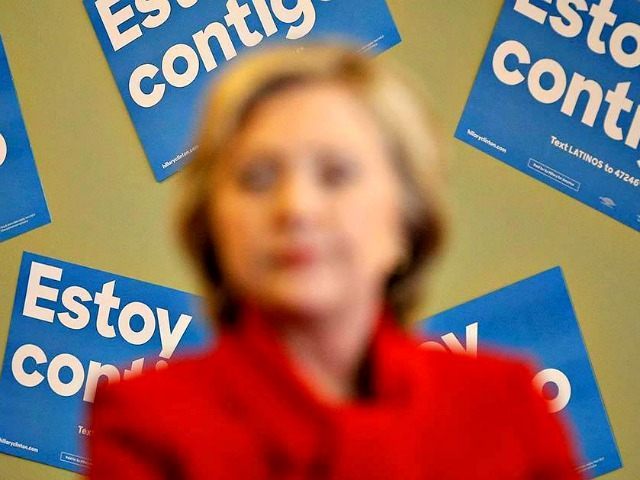This Saturday, Democrats convene caucuses in Nevada, the party’s third contest of the 2016 nomination battle. The most recent poll, from TargetPoint, shows a tied race between Hillary Clinton and Bernie Sanders, each earning 45 percent from likely caucus-goers. The findings are an ominous sign for Clinton’s campaign.
In 2008, Hillary Clinton followed up on her rebound win in the New Hampshire primary and defeated both Barack Obama and John Edwards in the Nevada caucus. She defeated Obama by almost six points, after leading polls in the state for much of the contest.
Obama had narrowed the gap immediately following his victory in Iowa, but Clinton battled back, even suprassing her final poll numbers.
Clinton’s strong margin with women, coupled with the fact that they made up 60 percent of caucus-goers, allowed her to defeat Obama handily.
In this latest poll, however, Clinton only leads Sanders by seven points among women, far behind her performance in 2008. Sanders is also doing much better among men than Obama did, leading Clinton by seven points. The recent poll assumes women make up the same share of the electorate as they did in 2008.
Worse for Clinton, perhaps, is that women voters say they are more likely to change their minds at this point in the campaign than male voters.
Hillary Clinton is also running much worse with young voters this year than she did in 2008. In that election, Hillary lost 18-29-year-olds by 26 points. This year, however, she is running 47 points behind Sanders with these voters. Sanders is leading her by 16 points among 30-44-year- olds, while she lost that group by only eight points to Obama.
This is the only recent poll of the Nevada caucus. John Ralston, the state’s preeminent political reporter, however, thinks the poll is worth careful consideration. Obviously, polling a caucus can be difficult, as there are unique factors that drive turnout.
That said, if this poll is accurate, it’s hard to see how Nevada can be taken for granted as a Clinton firewall to check Sanders’ momentum. She is currently running much worse with just about every demographic group than she did in 2008.
Clinton also trails Sanders by significant margins on the questions of which candidate is the most honest, most progressive, and cares the most about their concerns. In 2008, she beat Obama by a healthy margin on the question of which candidate cared more about voters’ concerns.
Clinton spokesman Brian Fallon has tried to lower expectations ahead of the Nevada caucus. He told NBC’s Chuck Todd:
There’s an important Hispanic element to the Democratic caucus in Nevada. But it’s still a state that is 80 percent white voters. You have a caucus-style format, and he’ll have the momentum coming out of New Hampshire presumably, so there’s a lot of reasons he should do well.
Nevada’s Jon Ralston quickly pushed back on the Clinton camp assertion that the state is 80 percent white.
I understand the desire of Team Clinton to lower expectations in Nevada after being crushed by Bernie Sanders in New Hampshire. But both Mook and Fallon know that 80 percent figure is ludicrous, and the attempt to make Nevada seem like Iowa and New Hampshire is a spin too far.
The facts:
Nevada’s Hispanic population is about 27 percent. African-Americans and Asian/Pacific Islanders make up almost 10 percent each. That is, nearly half of the state’s population is made up of minorities.
Ever since the Iowa caucus, the argument from Team Clinton is that Hillary has overwhelming support among minority voters. These voters will give Hillary an edge as the contests move to states more diverse than either Iowa or New Hampshire, they argue.
Nevada, by any objective measure, is a more diverse state. In 2008, minorities made up more than 35 percent of Democrat caucus-goers. If Sanders beats Hillary in the Silver State, Team Clinton’s argument about her firewall with minoritiy voters will look a lot weaker.
For at least the last month, Hillary Clinton has been performing far below her performance in 2008. Is there any reason to believe that trend is about to change?

COMMENTS
Please let us know if you're having issues with commenting.